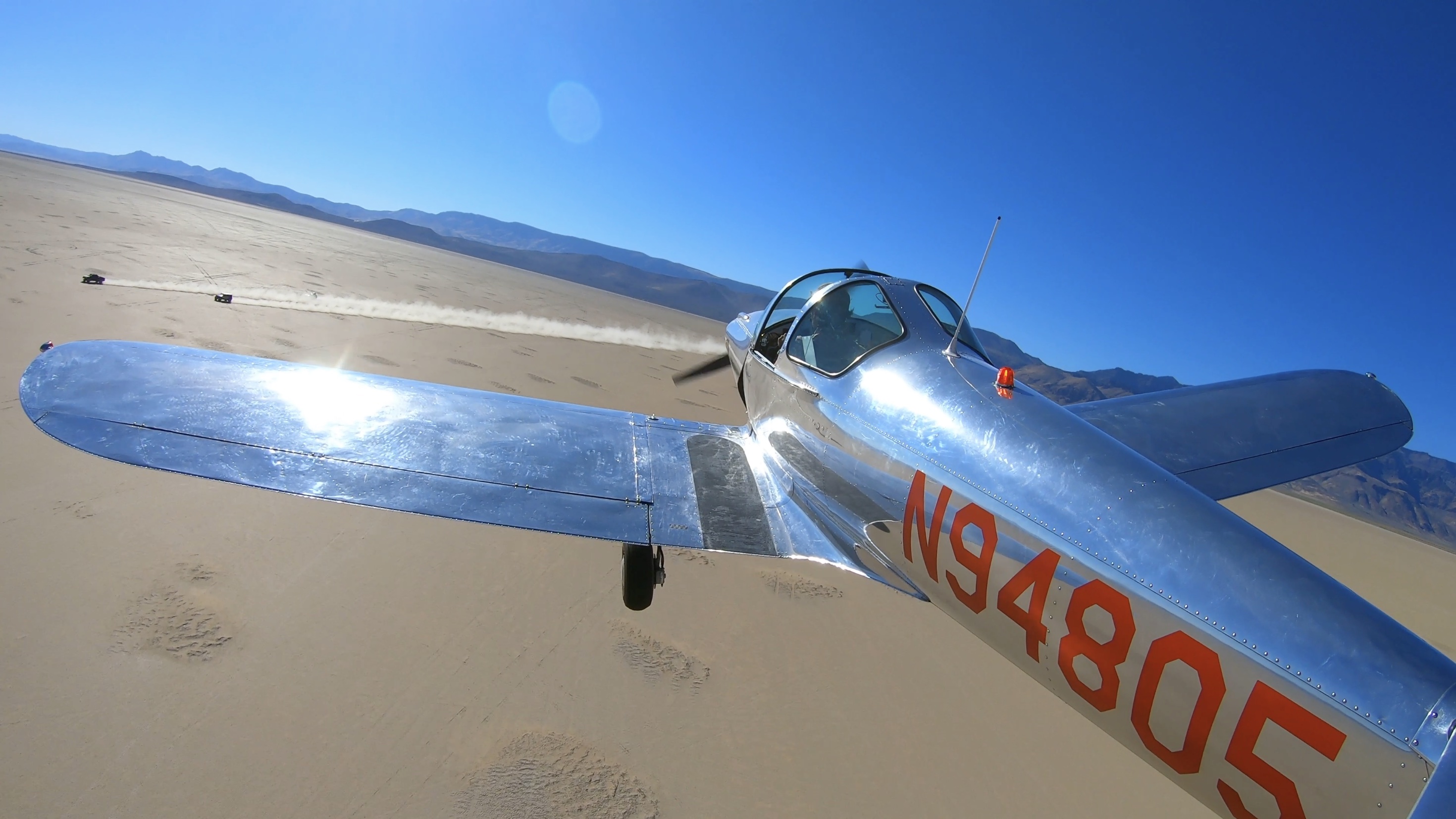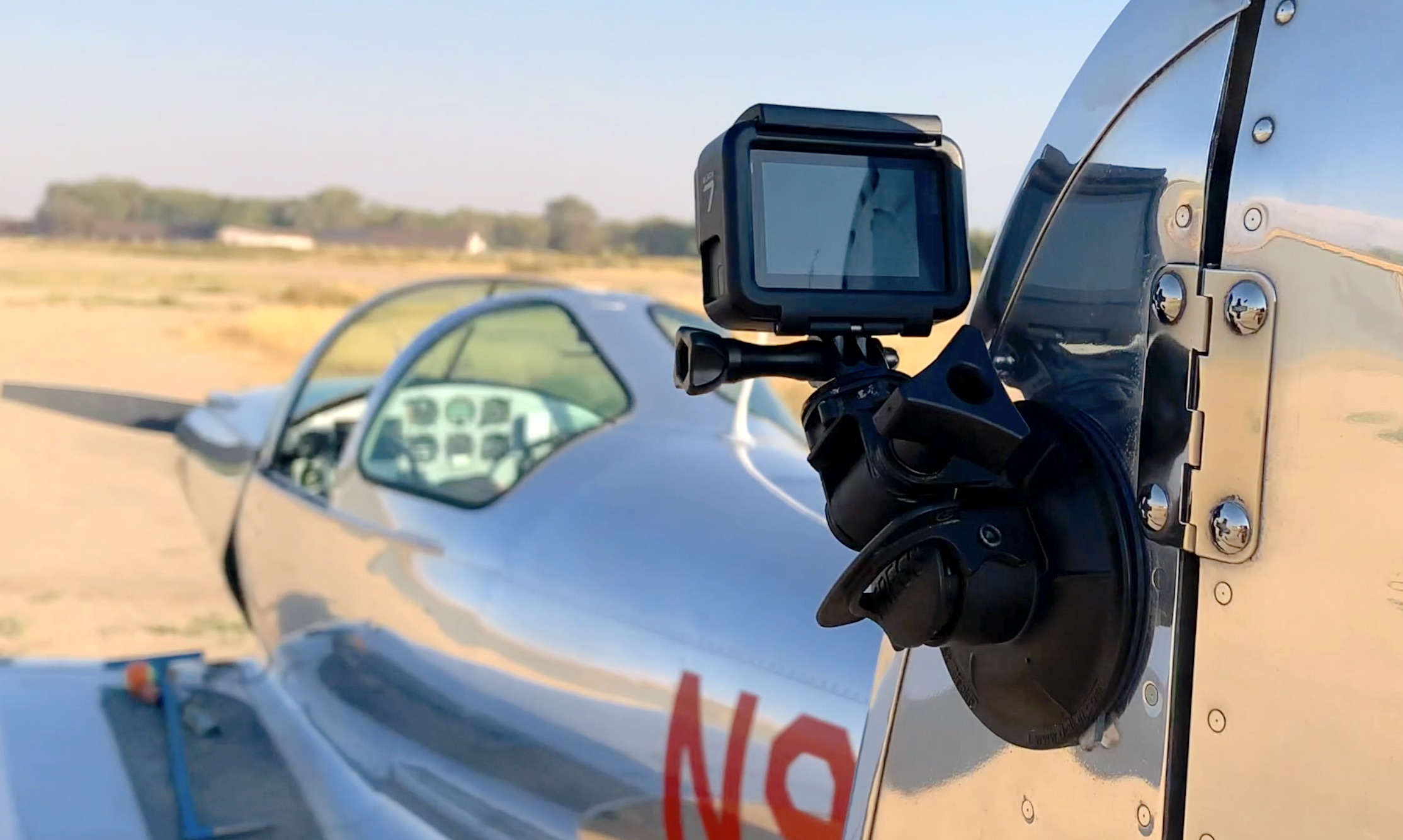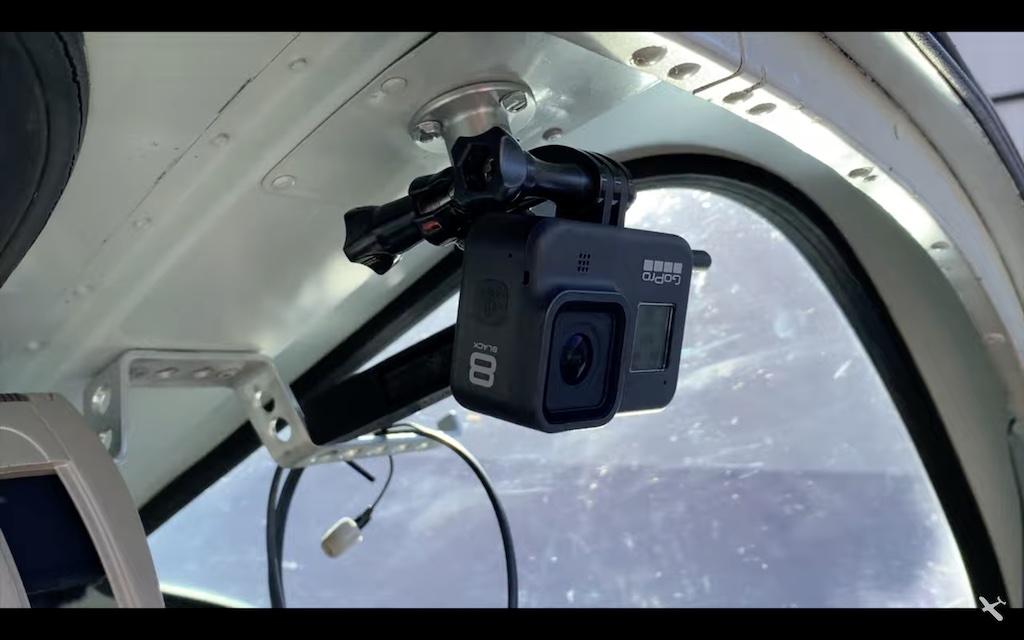Recording Flights
Recording films when flying can be a very rewarding exercise, an enjoyable hobby, and can add an element of purpose to your flights; to record something interesting. It also requires quite a lot of patience! The cameras can be fiddly, and the editing of all the footage together is time consuming. It's also very important to be able to operate the equipment, without impacting the safety of your flight.
GoPro Camera Setup
A lot of my early videos (Oshkosh, Vegas, HoodRiver, Amboy, etc) were shot using GoPro Hero 3+ cameras. But I have since upgraded to the much improved Hero 11 for the external views, and a GoPro Hero 9 for the cockpit. I've heard of friends trying to use cheaper GoPro clones, but I wouldn't recommend them; GoPro make a quality product, I wouldn't advise trying to save money on these things.

The popular 'Insta360' cameras are interesting new addition to the field. They allow you to capture video from all around the aircraft, then select which view you will use, post flight. There are some trade-offs in quality for this amazing feature, however. I also personally dislike the very wide-angle views that some people use with them. Maybe one day I will try one of these. For now, I am quite happy with my GoPros.
To record the outside shots, I use a Delkin Fat Gecko mount to secure the camera up on the port side vertical stabilizer. This position seems to work well for an Ercoupe. On the Piper Warrior, I put it upside down, in front of the gear leg. Many people has expressed concern that I will lose the camera, but it's made it safely for many hundreds of hours. I can't vouch for how it would mount to a fabric covered surface, but metal with smooth paint is fine. The mount I chose is made for sports car racing, and is apparently good for up to 200mph - it should be able to handle most GA aircraft.

The GoPro Remote is essential for long flights. This device lets you remotely stop and start the camera on the tail. Depending on outside temperature, the battery can last for 30 minutes of continuous recording. So you need to 'save battery' by stopping and starting the recording, if you would like to get the landing 'on tape'!. Using the GoPro Hero 11, and the remote, I can easily record all the interesting parts of a 3 hours flight. I find the GoPro remote to be about 99% reliable - yes, it's another failure point! It has to make a wifi or bluetooth connection to the camera, and you're in a metal tube; it mostly works, but can be frustrating if it doesn't. Sometimes, I have to say 'OK, it's died'. But then you try again 10 minutes later, and it works fine again.
What resolution to use? Basic footage looks OK at 1080p on a phone, and doesn't take much storage. But if you want to see your flight on a big TV, then 4K is the way to go. Framerate? I use 30fps, but some people prefer 24fps. The downside to 4K footage is that there is a LOT more data to deal with than 1080p. You also need a more powerful computer to process/edit it. I use an Apple Macbook Air, with an M2 processor, which handles it just fine.
Storing and Archiving your Footage
Storage. You'll need something to record onto. Most cameras use SD Cards these days. This is another area to not go with the cheapest option. Stick with a good name brand, such as SanDisk. The technical details with these cards are important as well - 4K cameras need to record the data extremely fast, and the card must be able to keep up. The SanDisk Extreme Pro cards work well for me. I usually use 128GB cards, which handle several hours of 4K footage. You can get bigger ones, but I prefer the redundancy of more, smaller cards. That way, if I lose a single card on a long trip, it's not everything.
Archiving. I like to keep my video and audio archived away, in case I need it for a future video. In fact, all my video files go into the archive as soon as I get home from a trip - just copy all the files from the camera card, into a well named folder on the external drive. I use large external hard drives, usually about one a year, to archive all my footage. The speed of the drive isn't as important as it's capacity, so I still use magnetic hard drives, rather than more expensive SSDs. As of 2025, Western Digital make a large reliable 5TB drive.
 Movie Making Equipment List
Movie Making Equipment List
| External (Tail/Wing) Camera | GoPro Hero 11 |
| Cockpit Camera | GoPro Hero 9 |
| External Camera Remote Start/Stop | GoPro Remote |
| SD Card - Camera Storage | SanDisk 128GB SD Card |
| Cockpit Audio Recorder | Sony ICD-PX370 |
| Cockpit Audio Cable | Nflightcam audio cable |
| External Camera Mount | Delkin Fat Gecko mount |
| Voice Over Microphone | Logitech Blue Yeti X |
| External Hard Drive for Archiving | Western Digital 5TB HDD |
If you buy something using the above links on Amazon, I will receive a small referral fee. So, much appreciated if you use those links, thank you!
Here's an image of my GoPro Hero 8, mounted to my Ercoupe's map reading light for the 'over the shoulder' view: 
Audio Recording Setup
Audio recording was definitely the harder part to figure out. I originally used a cable that fed the intercom audio into a GoPro for recording. There is a major problem doing this - you cannot reliably tell if the audio signal is getting to the GoPro. Many flight recordings I made were ruined because I could not tell if the audio was recording, visually. A cable might get pulled out slightly, or the connector is damaged, etc. So I tried a digital voice recorder - with visual meters to visually give me an indication that I am recording. I found a simple Sony digital voice recorder, the Sony ICD-PX370, which I highly recommend. I use an Nflightcam audio cable to get my intercom/radio audio into the Sony recorder.
I use my 'over the shoulder cockpit GoPro' audio (ambient cabin noise) to add some engine noise to the film, and mix the Sony intercom recording on top of that. I also record manual voice-over's using a good quality microphone. If the current scene is a hand held iPhone video, I may switch to the audio from that, although not if it's an in-flight shot.
Video Editing Software
I use Apple computers, so can really only speak for that environment. I started making my videos using Apple's iMovie, which works pretty well when you first start out. I'd lay down the video from my constantly recording cockpit GoPro as the base of the timeline, then manually position iPhone and external footage 'above' the main timeline. Then edit cut out most of the main timeline, to get a 15-20 minute story. The manual positioning of that iPhone and external video became tiresome, however.
This is when I switched to Apple's Final Cut Pro. This has a lot of extra features that can up your video making game. The main one being the 'Multicam' feature. This allows you to dump all of your video and audio into separate 'tracks', and then you can just select which is being shown at any particular time. It also works very nicely with Apple's Compressor software to optimize your output video, and Motion to create titles and effects.
Conclusion
The cameras are expensive, can be difficult to operate and putting it all together can be challenging; so why do this? For me, I have three main reasons:
- Keep a record of these cherished moments and have something to look back on when I can no-longer fly myself, as that day will come. With my videos, I can re-live the moments. Even now, looking back on early flights with Charles is lovely!
- Exercise my creative side. It's a great add-on to my photography hobby.
- Share this amazing hobby with others.